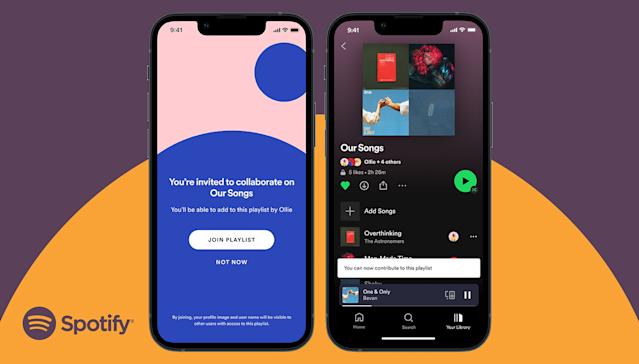How do Spotify’s algorithm and recommendation system work?
Do you want to know how Spotify’s recommendation algorithm works? Discover the three models on which its recommender system is based: Collaborative Filtering Model, Natural Language Processing Model and Raw Audio Model
We all know Spotify, a streaming music platform with more than 400 million monthly users. Users of this platform have access to millions of songs and podcasts from creators around the world.
Like Netflix, Spotify’s big advantage over the competition is its recommendation system based on Deep Learning. This system makes it possible to offer users a completely personalized experience based on the data that the platform collects.
Through 3 recommendation systems that we will see later, the platform recommends music to users similar to the one they listen to or have marked as a favourite. This way you get users to spend more time on your platform.
Recommendation models used by the Spotify algorithm
Spotify has 3 mechanisms to make recommendations within its platform.
1: COLLABORATIVE FILTERING MODEL
This model may sound familiar to you since it is the one Netflix uses to make its movie recommendations. It was the first company to implement it and due to its great success, many began to apply it.
This model analyzes the behaviour of different users with songs, podcasts, playlists, etc. In this way, it shows the user songs that they may like because users with similar tastes listen to them.
To make it easier to understand, let’s give an example:
- User 1 listens to songs A, B and C
- User 2 listens to songs A, B and D
- So, Spotify detects that they are users with similar tastes and therefore, they will like the same songs. User 1 recommends listening to song D and user 2 recommends listening to song C.
But how does this collaborative filtering system work?
This model works with the interaction matrix. The task of machine learning is to learn a function that predicts which songs each user will like. The array is usually huge, very sparse, and most of the values are missing.
Each matrix row represents one of Spotify’s more than 400 million users, and each column represents one of the platform’s more than 35 million songs.
The Python library then runs a long and complicated matrix factorization formula that results in two types of vectors (represented by X and Y ). X is the user vector representing the taste of a single user, and Y is the song vector representing the profile of a single song.
At this point, we have over 400 million user vectors and over 35 million song vectors. By themselves, they do not provide any information, but when we compare them we obtain very valuable information.
To find out which users have similar tastes to ours, we must compare our vector with the rest of the vectors, this is done by collaborative filtering. Once this is done, we will know which users are closest to us. And the same goes for songs, when we compare a song vector with all other song vectors, we find which songs are similar.
2: NATURAL LANGUAGE PROCESSING MODEL
Another way Spotify uses to make recommendations to its users is through natural language processing.
The songs, being audios, do not have written words that describe the song, that is, no text can be processed that tells us if the song is summery, nostalgic, fun…
For this, all the content published on the network is used, such as blogs, websites, articles from digital magazines, etc. in which the song or artist being studied is discussed to discover which adjectives or words are used most frequently to describe that specific song or artist.
Once all these contents have been analyzed, the algorithm creates an information matrix that serves as a database and we can search for similarities between songs. In addition, each term that defines the musical track is given a weighting to know the relevance that each word has in each song.
On the other hand, articles, blogs, etc. are also searched. the artists and songs that are mentioned along with others.
3: RAW AUDIO MODEL
In this model, the songs themselves are analyzed to find out their characteristics (song duration, volume, tempo, key, etc.) and thus draw similarities between them.
It is very useful especially to be able to recommend those songs that are new and do not yet have any kind of history because you can compare the characteristics of this song with those of others to find similarities and show it to users who listen to those similar songs.
And how are the songs analyzed to obtain their characteristics?
The answer is very simple, with convolutional neural networks. It’s the same technology used in facial recognition software, but in Spotify’s case, it’s been tweaked to use it on audio instead of pixels.
Conclusion:
Thanks to these three recommendation models, Spotify is capable of making millions of recommendations based on different criteria, offering a unique experience. It gives users the opportunity to listen to new music every day without repeating any song and to discover new artists.
Every day we can see the importance of Artificial Intelligence, Machine Learning and Deep Learning in business. Working with data and using it to our advantage can make a big difference in our company.







